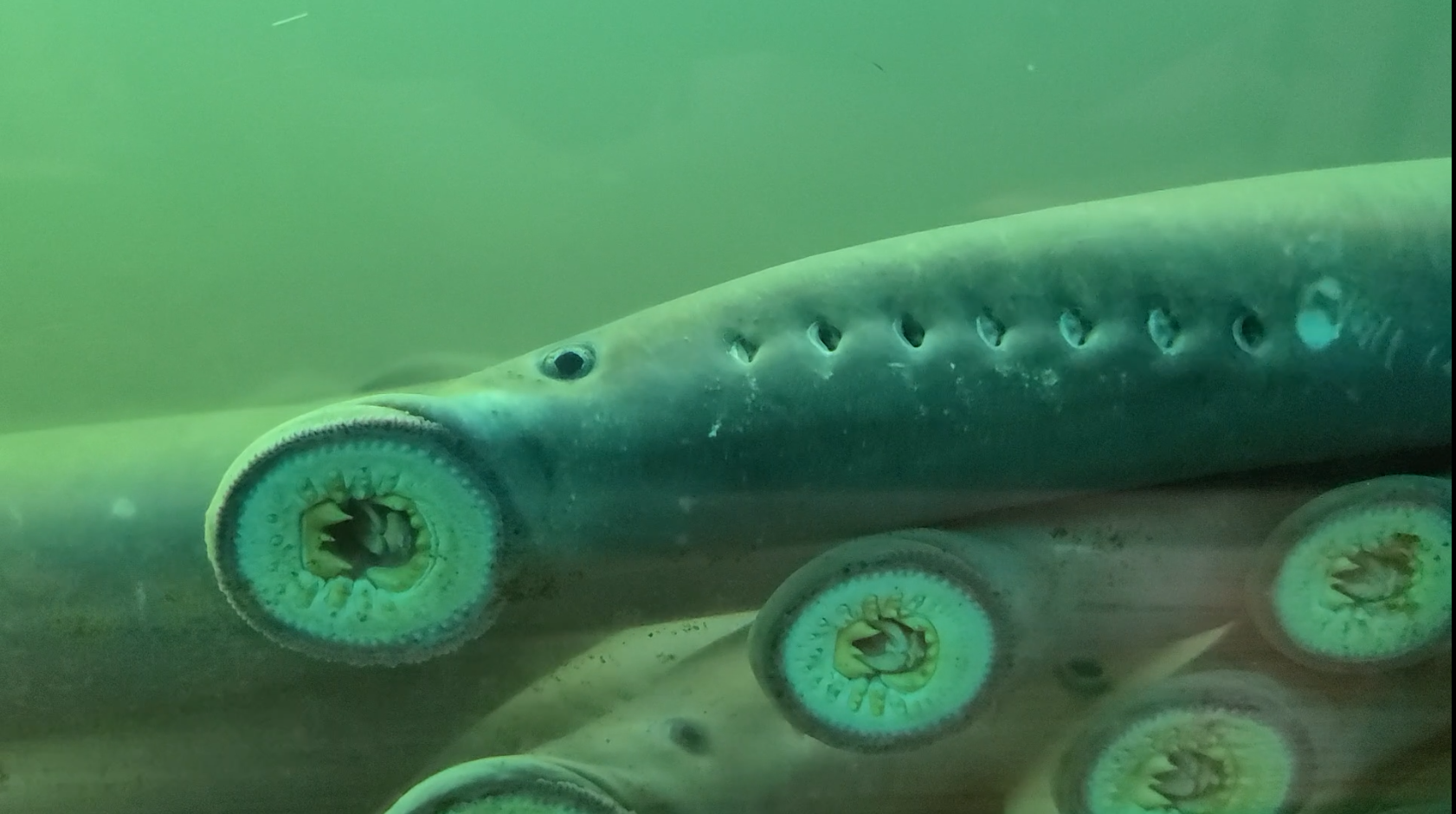CASCADE LOCKS, OR -- Pacific Lamprey populations are increasing in the Columbia River. According to the U.S. Army Corps of Engineers, lamprey counts are around 170% higher than the 10-year average.
"As of mid-September, we were hovering around 63,000 lamprey for our daytime counts at the Bonneville Dam fish count stations," says Sean Tackley, a fish biologist with the Army Corps of Engineers, "But, you know, lamprey are really active at night. A lot of lamprey pass the dams at night and some also pass via these special structures we’ve installed. So the true count is probably closer to 165,000 or so."
Local tribes estimate lamprey runs in the Columbia were closer to a million per year before the dams were built in the 1930s. Tackley says, "The engineers that designed the fish ladders there did a great job of designing them to work for salmon and steelhead. But, lamprey were at that time, unfortunately, considered kind of a nuisance species or an afterthought, at best."
Lamprey are not an attractive fish. Although, Tackley points out that is in the eye of the beholder. "They’re a member of the jawless fish family, they’re a really ancient form of vertebrate, if you will. They don’t have gills, they have these kind of gill pores, instead. And they don’t have paired fins like salmon and other true fish." They’re often confused with eels.
Restoration work began in the 1990s, when scientists discovered their importance to the Columbia River Basin ecosystem and their significance to local tribal communities, "These are a first food to the tribes. They are and were an important part of the diet to the native people of the Northwest, and as such, also were an important part of the culture, and continue to be." Tackley says a lot of work and money has gone into upgrading fish ladders to accommodate the important species. "The tribes deserve a lot of credit for what we’re seeing, as well. Because they’ve been both advocates and also leading a lot of lamprey restoration work, including collecting a lot of lamprey at the dams and transporting them to upriver tributaries."
Tackley says lamprey numbers are also driven by ocean conditions and food availability.
Image: USACE photo by Kerry Solan




